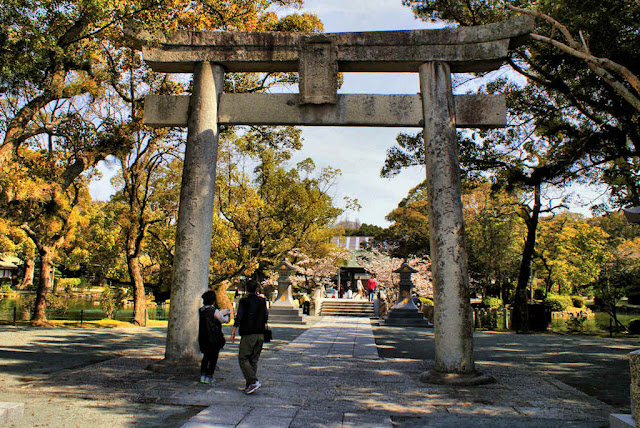Takami Jinja
Came upon this rather imposing looking shrine while walking from Yahata to Kokura. Apparently when the fledling Japanese steel industry started up here in the late 19th Century the local steel companies made it their tutelary shrine and supported it financially.
According to the legend, Jingu stopped here on her way to invade Korea. The kami now enshrined here suggest to me that they were decided upon in fairly modern times. The primary group of three are Amenominakanushinokami, Takamimusubinokami, and Kamimusubinokami.
These are the first three kami that came into existence at the creation of the universe, but many researchers suggest that in ancient times there were no shrines to them. Before the seperation of Buddhas and Kami in 1868, many shrines throughout Japan enshrined Myoken, the North Star, but because of its buddhist origins the kami was changed to Amenominakanushi.
The list of kami enshrined here continues with Umashiashigabi, Ametokotachi, Kuninotokotachi, and then carries on with a variety of kami connected to the descent of Ninigi and the foundation of the Imperial line, which all leads me to suspect that they were enshrined in the Meiji period with the creation of what became State Shinto.
Secondary shrines in the grounds include one to the 3 Munakata princesses from nearby Munakata.














































